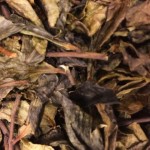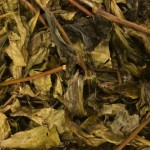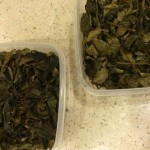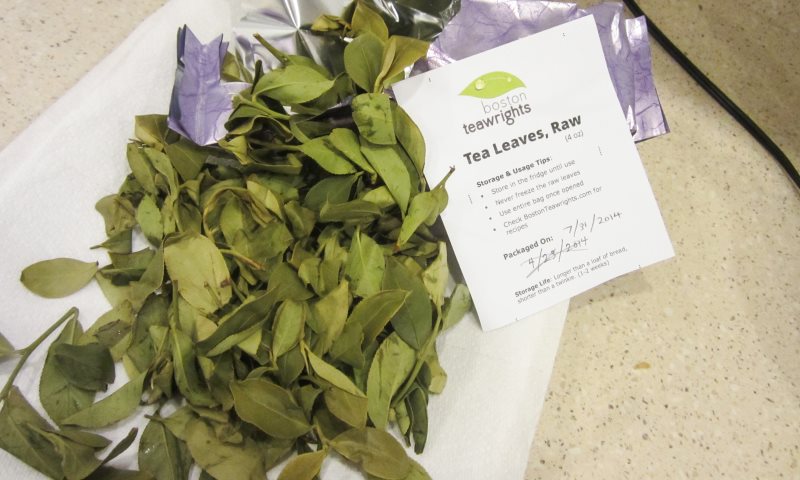
Fresh Tea Leaves, by Talia Hirsch
I’ve loved getting to hear everyone’s stories about their tea creations, but this week it was my turn to try it for myself! I’m excited to say I tried making a green tea and a black tea so I could have the firsthand knowledge of the process of making both kinds. Instead of expanding on what crafting tea meant to me emotionally and personally, I want to share the practical knowledge I gained from making the tea. I hope it helps you understand a bit more in detail about what goes into the process.
Imagine you’re in the kitchen, equipped and ready with your bag of tea leaves. I was in this position just a few days ago, and I started where it all started: the Boston Teawrights website. There are instructions for making green and black teas, which are simple and great for a beginner like me! I began with the black tea, because it needs to sit out for a while before you can begin the rolling process of extracting the liquid. I let mine sit for a few hours on the counter, and once they were ready, I began the rolling.
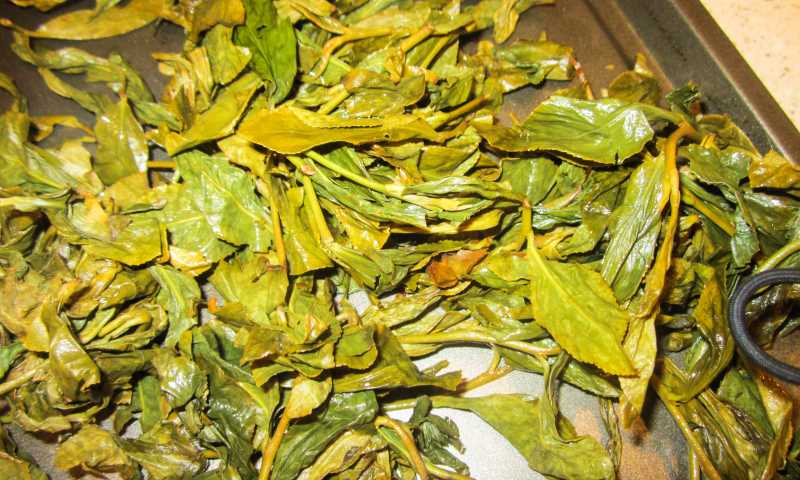
Rolled Green Tea Leaves, by Talia Hirsch
As the site explains, rolling the leaves involves the rolling and crushing of the leaves with your hands. Still new to the process, I was unsure about how the leaves should look and feel when you’ve sufficiently rolled them. So it’s possible that I could have rolled them more. You’re not only looking for liquid dropping from the leaves, but also for a little build up of foam. This is the same for black or green teas.
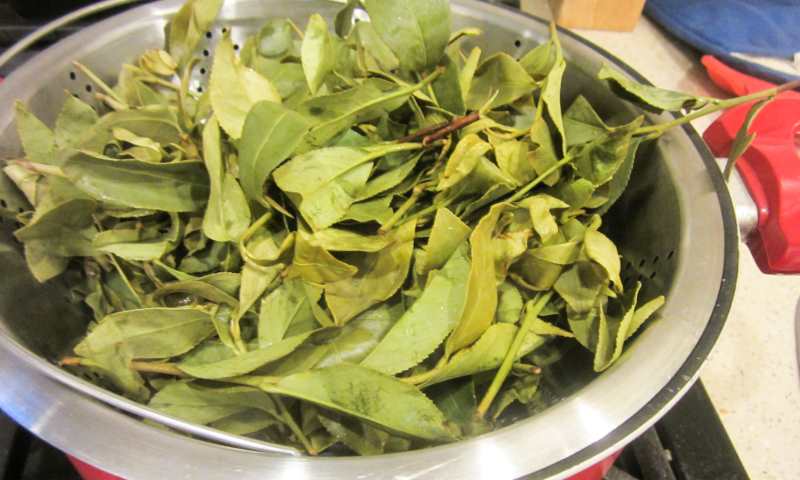
Steaming the Tea Leaves, by Talia Hirsch
After I rolled out all the black tea, I put it on a cookie sheet to sit out, oxidize, and darken, hence why we call it black tea! While I waited for it to turn color (it took about three hours), I started on the green tea. For the green, I steamed the leaves in a steamer over boiling water. I tried to achieve the look of wilted spinach like the website said. Yet the leaves kept steaming for longer and longer. I did not see much of a change until I took the leaves out of the steamer for rolling. At that point, it pleased me to see they were damp and wilted. If the same thing happens to you, I suggest checking a few leaves to see if they are ready. That’s an important step because steaming should not go on much longer than a few minutes.
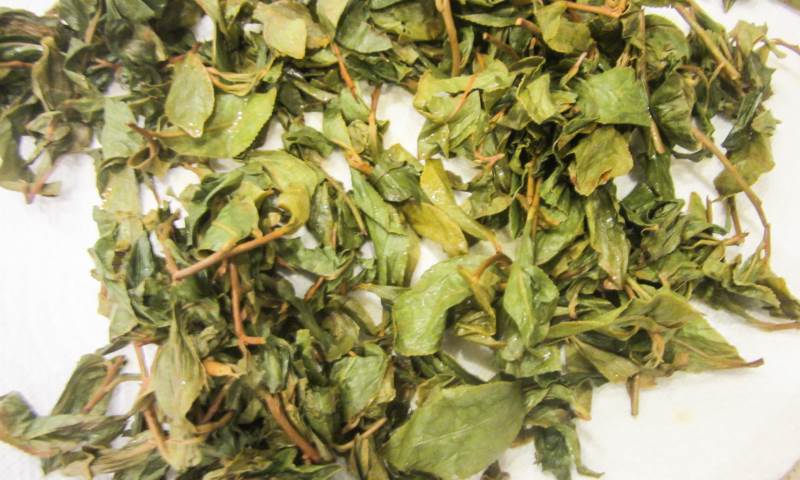
Green Tea Leaves After Steaming and Before Rolling, by Talia Hirsch
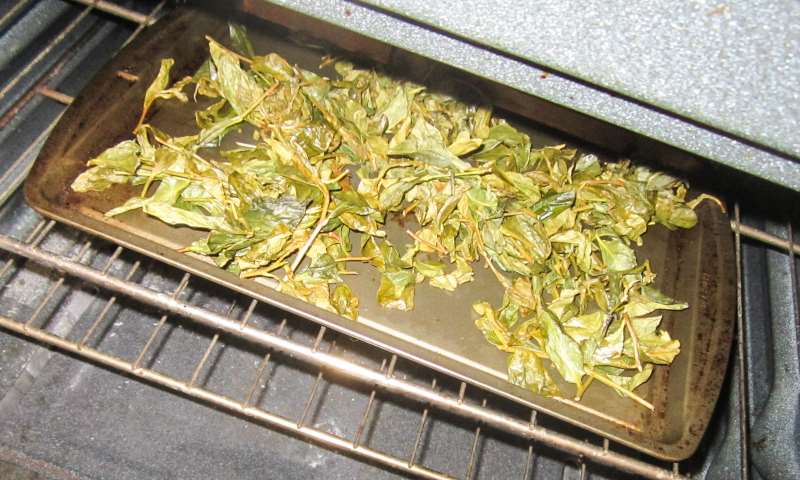
Drying the Green Tea Leaves, by Talia Hirsch
After steaming the tea, I rolled it the same way I had done the black tea. Next, it was time to dry the leaves. So I spread them out on a cookie sheet and put them in the oven using the time and temperature recommended on the Teawrights website. The time suggested 20-30 minutes, but even after 30, the leaves did not feel completely dry. I later realized that it wasn’t dampness I was feeling, but the oily feel of the finished leaves. I learned that oiliness can be the sign of a good tea, a fresh tea. Learning this restored my confidence. The only thing left after drying the green tea was drying the black tea. After it oxidized, I dried it in the same way I dried the green tea, just for a little bit longer. Here are my finished teas:
- Finished Black Tea, by Talia Hirsch
- Finished Green Tea, by Talia Hirsch
- Finished Teas, by Talia Hirsch
I couldn’t wait to try the tea, obviously! The smell alone was addictive, and I couldn’t stop opening the containers just to smell the earthy, roasted aromas. I want to share with you all how I steeped it, because with fresh, whole leaf tea comes different brewing techniques. I just had a plain old teacup and a pot of boiling water. Since the leaves are whole and so easy to remove from the water afterwards, I went for it and just threw the leaves straight in. Make sure to use enough leaves for a cup, which is usually 2 grams (this averages to a small palmful of these leaves). Let them steep for around six minutes (that was the length I tried and it was perfect!). I left the leaves in while drinking the tea, but you can take them out if you feel you extracted enough flavor.
Whole leaf teas are even usable many times. You can re-steep the same leaves if you finish one cup and want another. Don’t leave used leaves sitting around for too long if you want to reuse them, though. The tea was inexplicably similar and different to every other tea I’ve had. But it was definitely a nice thing to know that I was drinking something I crafted myself. It had my individual input and spin, which was rewarding to think about as I drank the finished product.
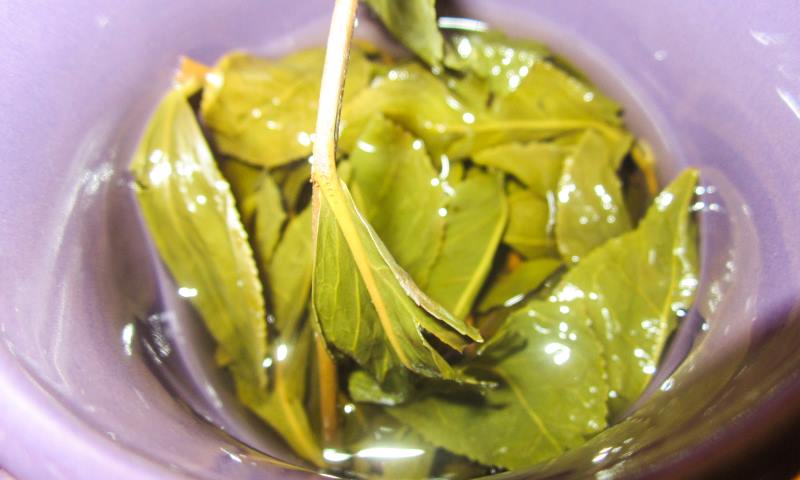
Cup of Green Tea, by Talia Hirsch
Now that I have all this tea, my next experiment will be to try adding different flavors! I went to the store and picked out a few of my favorite flavors. These included crystallized ginger, dried strawberries, and coconut flakes. I still haven’t tried adding them, though. I’m still not sure if I want the whole batch to take on the added flavors or if I want to add them just cup-by-cup.
I want to end with a thank you to Boston Teawrights for providing the instructions on how to make and brew tea. I also want to thank Caleb for being quick to answer my questions and concerns while I was making the tea, so I could share them all with you!
Discuss this post on our subreddit
[related-posts]

